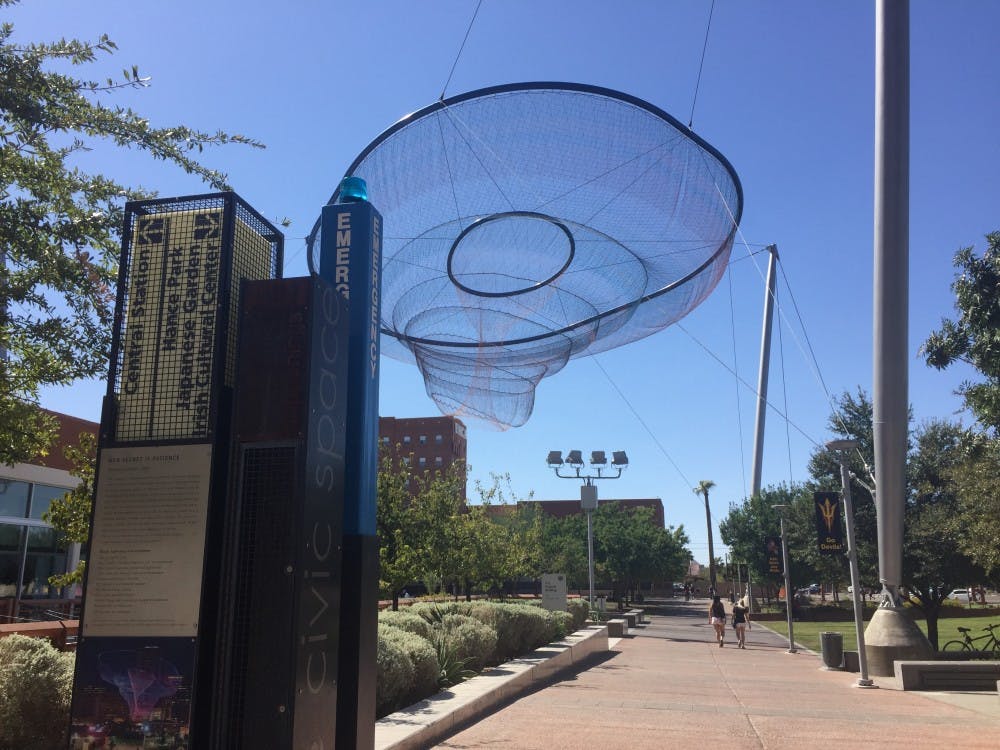The Valley arts scene consistently contributes to the local economy and the community, from influencing social movements to lending platforms to demand more funding for local arts programs.
'Artivism,' which is activism through art, seeks to create dialogue and social change. ASU staff are getting involved in arts programs that seek change within communities while alumni create exhibits discussing power and inequity.
Whether through artistic productions on controversial topics or involvement in councils that look into funding opportunities and local perspectives, there is a connection between the artivist movement and funding issues within local arts communities.
Art can better take on knotty issues with economic support, arts advocates say.
“Perception regarding investment in the arts needs to change, and that begins with how we choose to value and recognize the impact of the arts in our city," said Estrella Payton, outreach program manager for the Phoenix Office of Arts and Culture.
What does artivism do?
In many ways, artists play a large role in activism. Members within the arts community are all too aware of the impact artists have on their communities. However, an accepted definition for artivism has yet to be decided in the community, as many see the concept as complex.
Steven Tepper, the dean of the ASU Herberger Institute for Design and the Arts, said he thinks all art is a form of activism because it tries to activate people to imagine the world differently.
“Social change, I think, almost can’t happen without art because you have to imagine a future that’s different than the one you’re in and it is artists that can activate that imagination,” Tepper said.
He said artists and artivism are focused on the social transformation, and there is always transformation and change resulting from what artists and designers do.
“In this time of rapid change, artists give communities and citizens the tools they need to move from fear to creativity,” Tepper said.
Muriel Magenta is a professor of intermedia at the Herberger Institute. Within the last year, Magenta curated and participated as an artist in an exhibition called, "Push Comes to Shove: Women and Power" through the Scottsdale Museum of Contemporary Art. This exhibit featured 19 artists who take on issues of women and power.
“I am very much in favor of artivism and activism through art as an artist and also as an educator, and as a woman,” Magenta said.
From her experience as an artist and her involvement in social movements, she believes politics should be a big part of art.
“From my perspective, you have to get political,” said Magenta. “You must come forward and to come forward is political.”
Where is the funding for social change art?
Chandra Crudup is a faculty associate coordinator and a lecturer in the School of Social Work at ASU.
Crudup said there needs to be recognition for art that isn't "celebratory." She emphasized the need for funding for art that creates change, such as the production "The Scottsboro Boys," by the Black Theatre Troupe.
But Crudup said investors may avoid certain projects because of the controversy they could generate.
“The capital is potential change, but not in dollars,” Crudup said at the Seeking Justice in Arizona lecture on Sept. 11.
'Artivism' also starts the conversation about the lack of funding.
Ashley Hare works as the director of arts learning and community engagement for the City of Phoenix. She is also the executive director of Phonetic Spit, a youth spoken word and hip-hop organization.
She said private donations are a key piece of the funding puzzle for Arizona arts organizations. Hare said she feels lucky to be in a community where individual donations are small but many.
“Many colleagues of mine in other states are discussing the impact of 100 $10 donations versus one single $1,000 donation,” said Hare.
She said the experience of working with a nonprofit organization allowed her to see the challenges of funding in the arts community.
“We do not have the number of arts investors via family foundations and businesses,” Hare said. “Generations of wealth in the (east coast) and the tech boom in the far west have given those communities a bigger boost than Phoenix.”
As Estrella Payton put it: “Investment in the arts is not just nice, it is necessary for the economic and social well-being of every person in Phoenix."
Editor’s note: An earlier version of this article did not include the Phoenix Theatre’s involvement in the mentioned production of the “Scottsboro Boys.” The article has been altered to include this clarification.
Reach the reporter at mayafoxall@gmail.com or follow @mayafoxall on Twitter.
Like State Press on Facebook and follow @statepress on Twitter.




